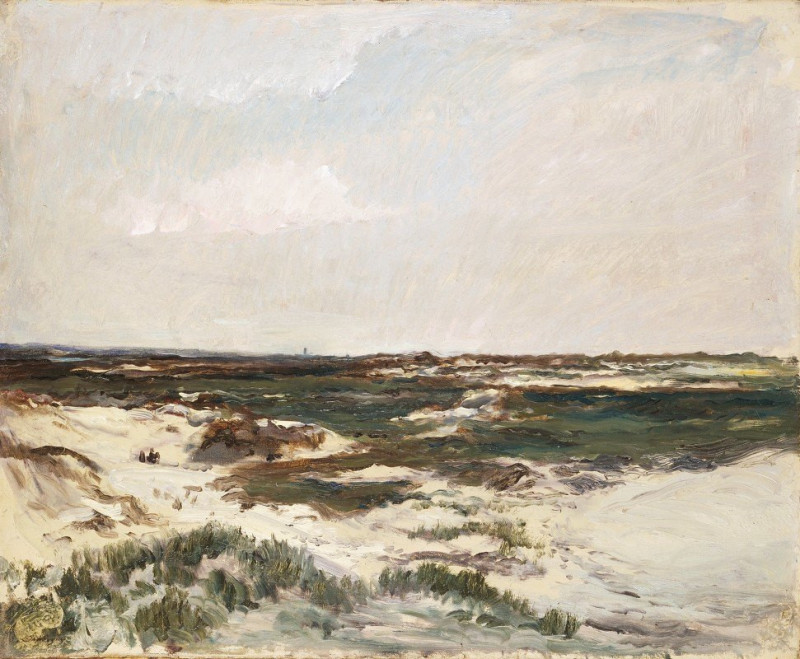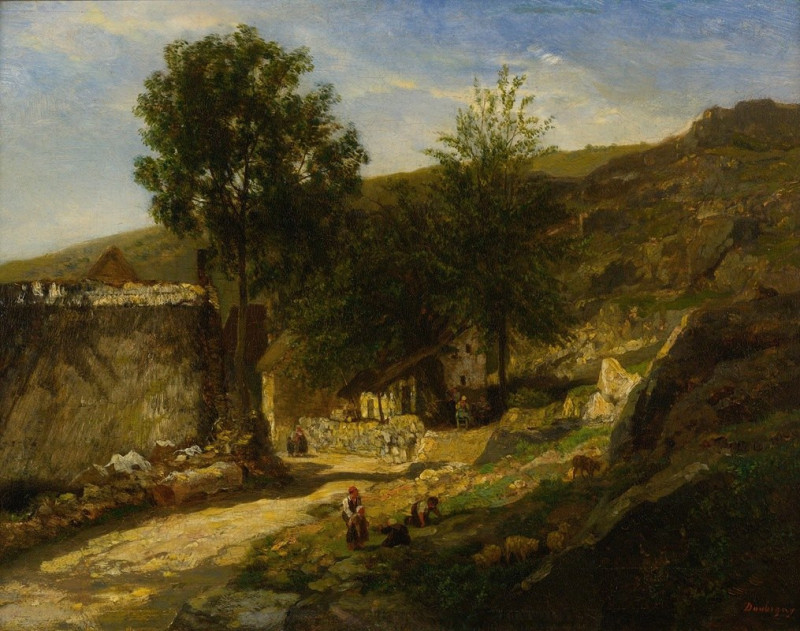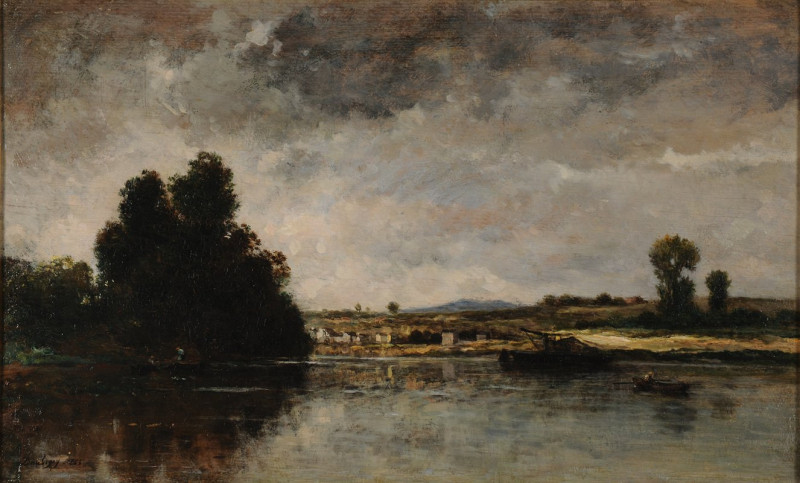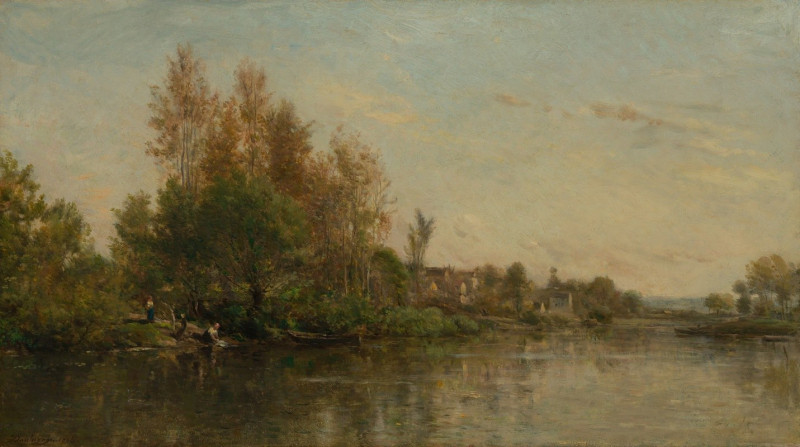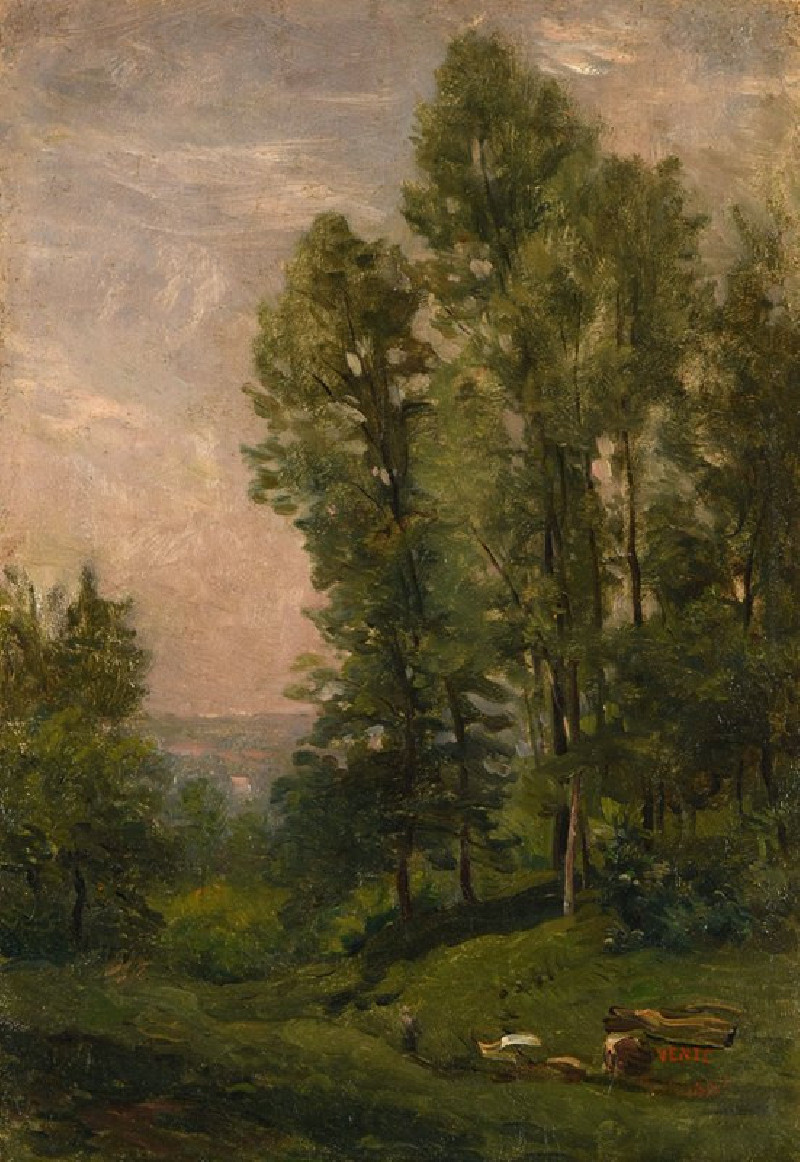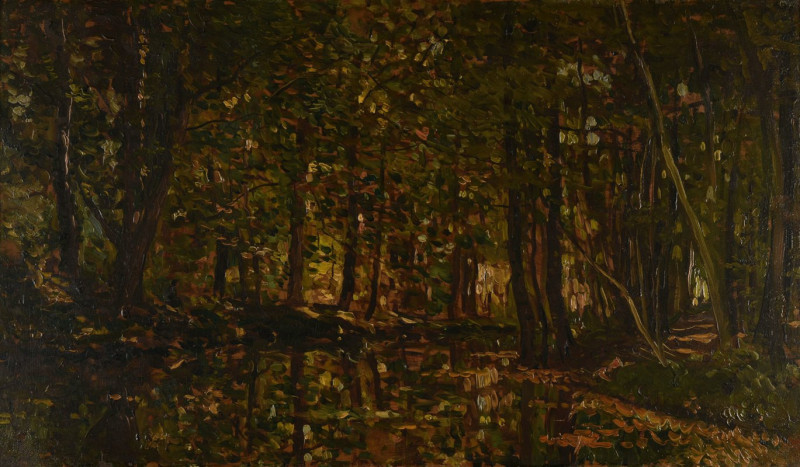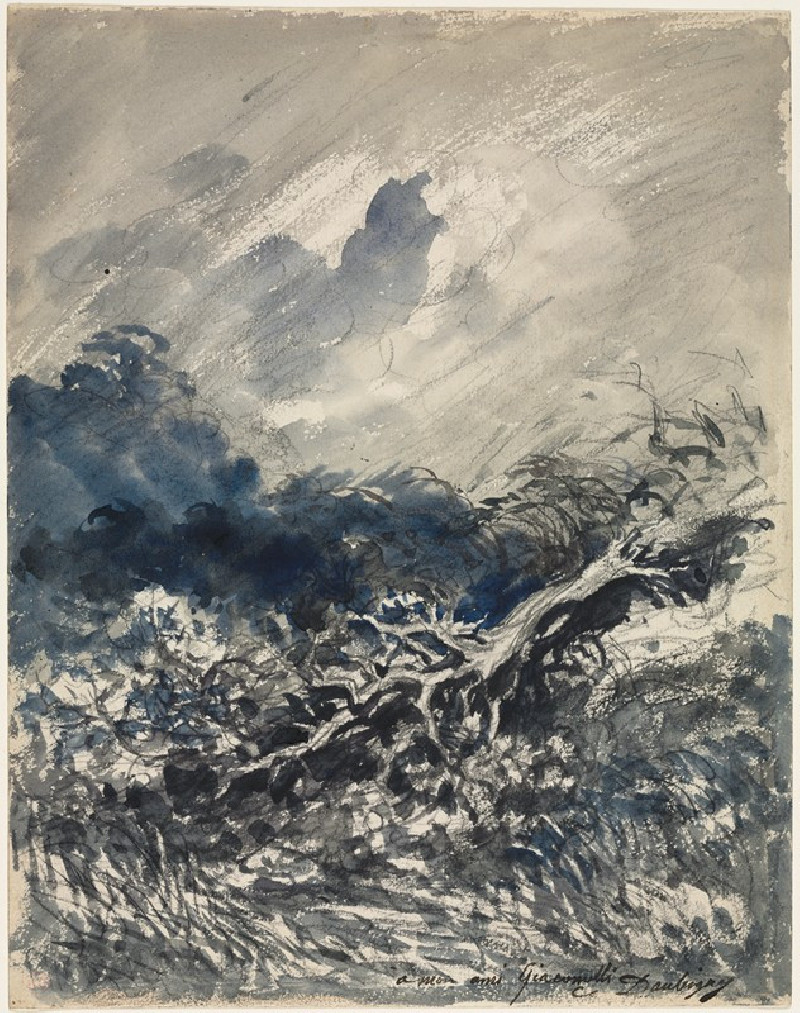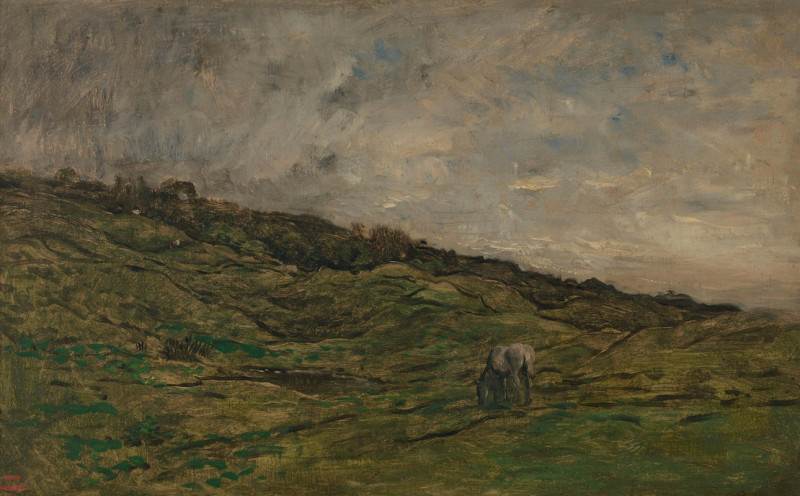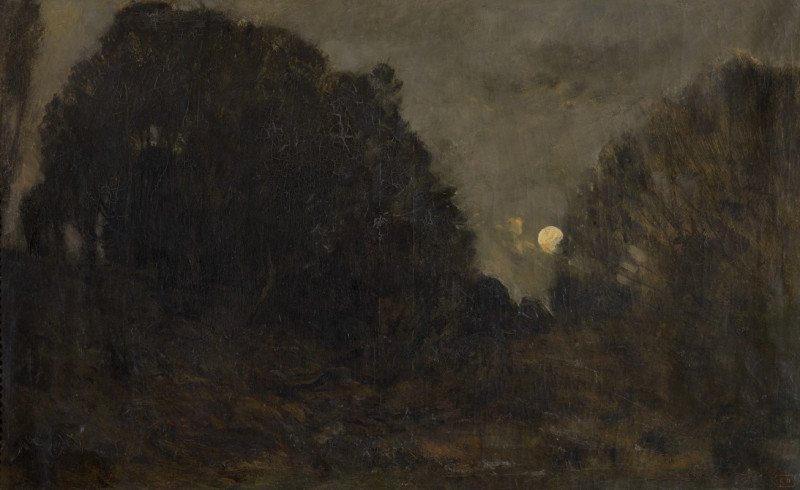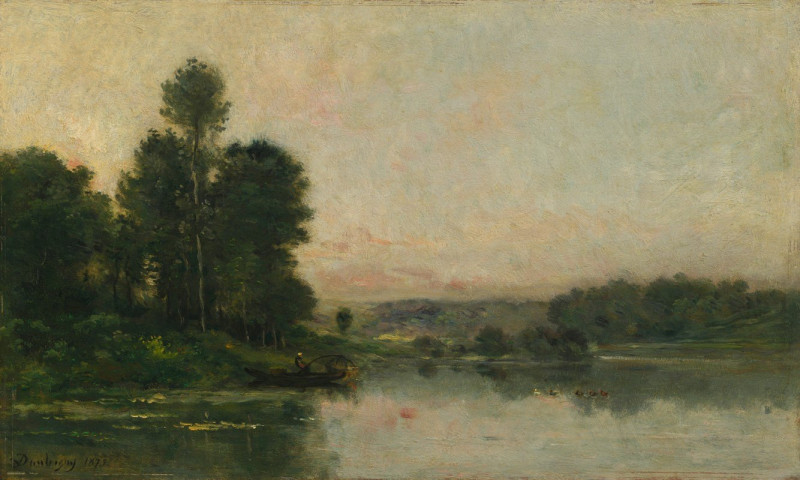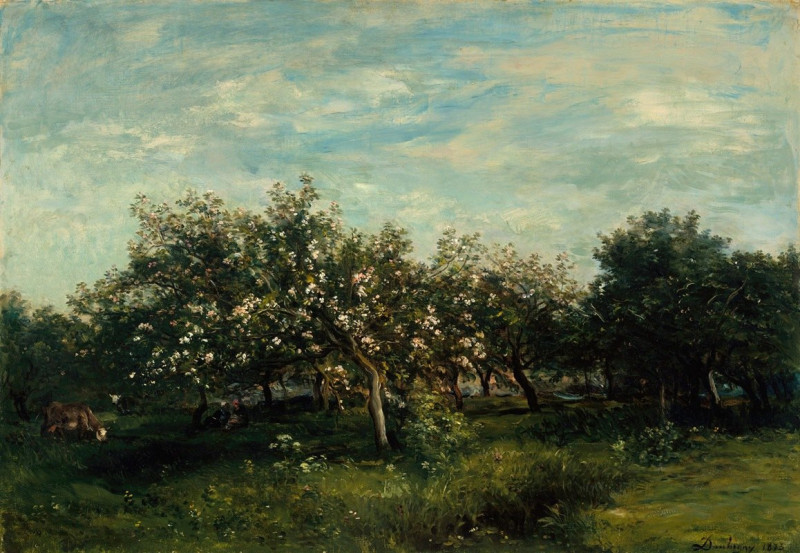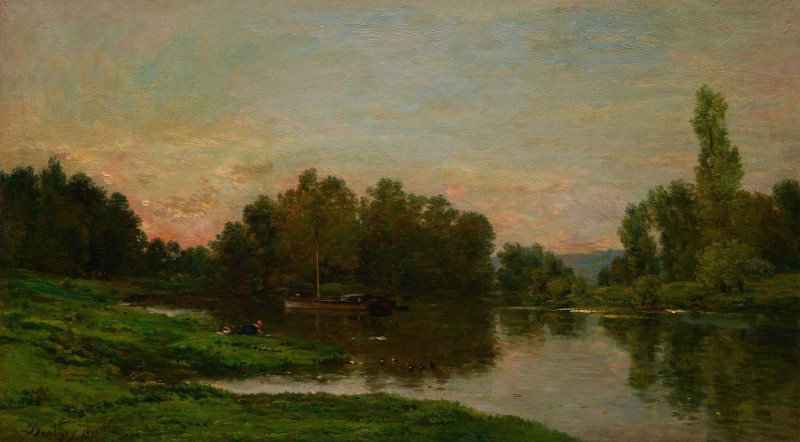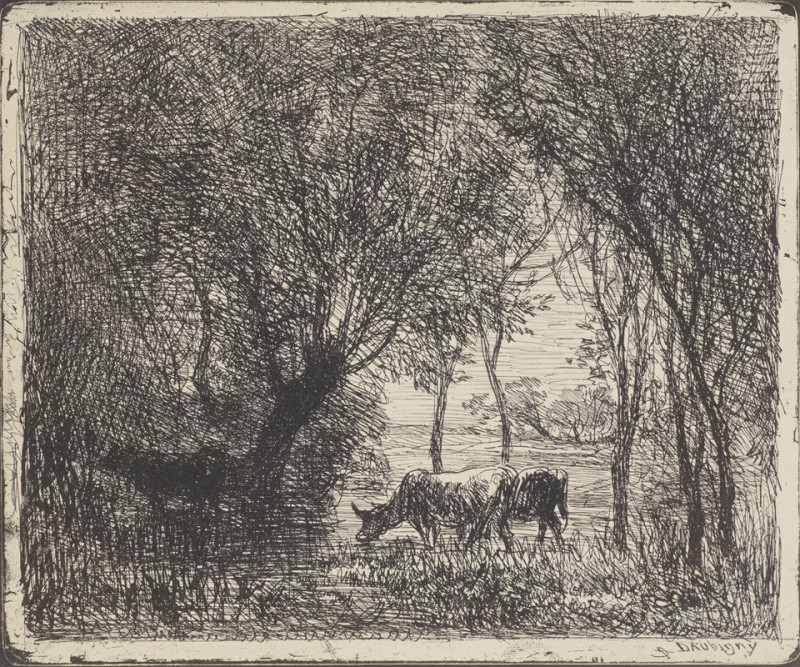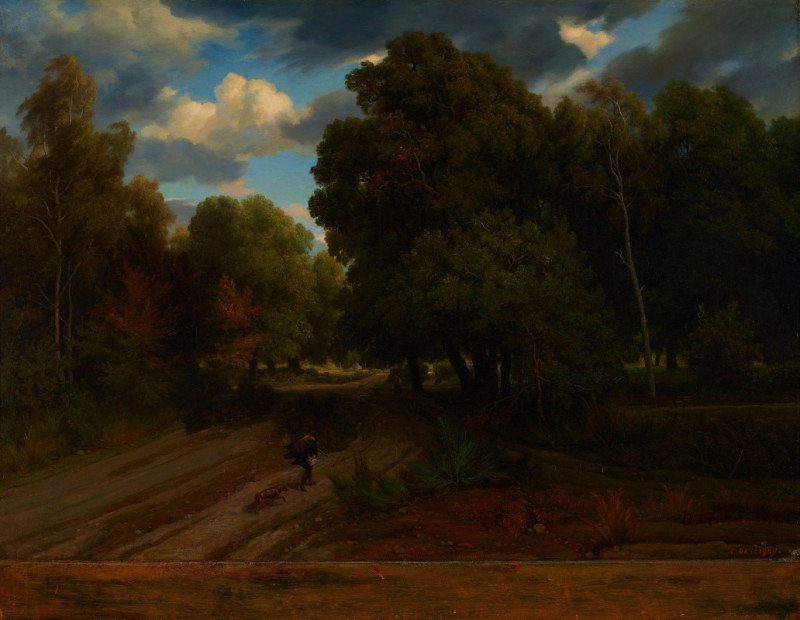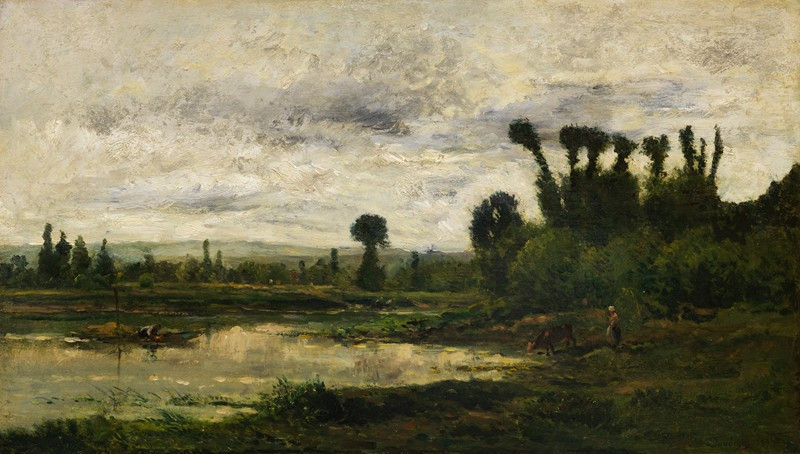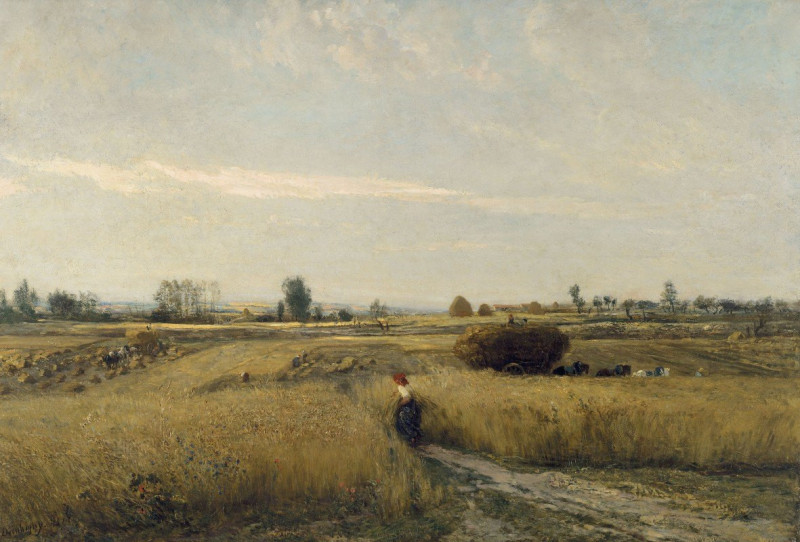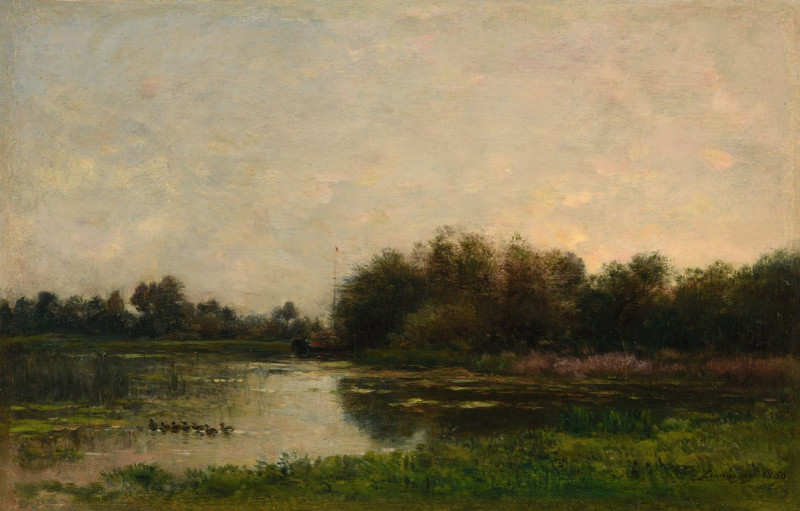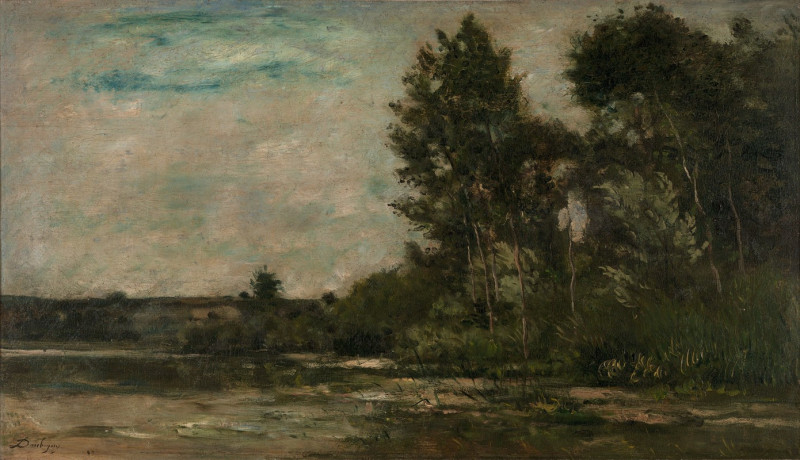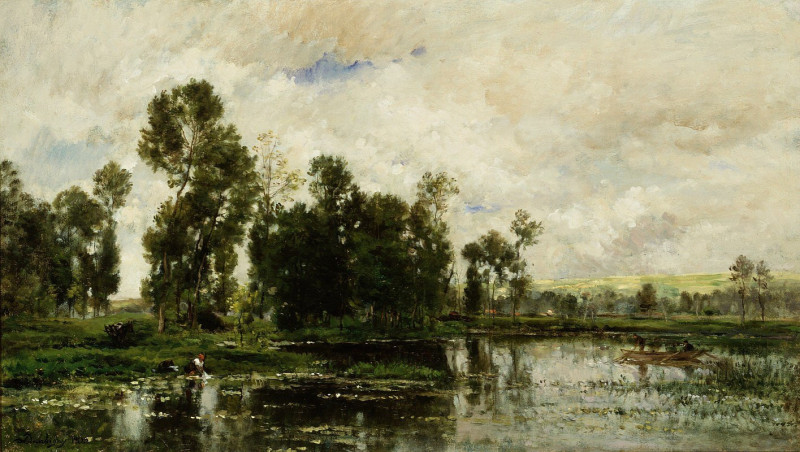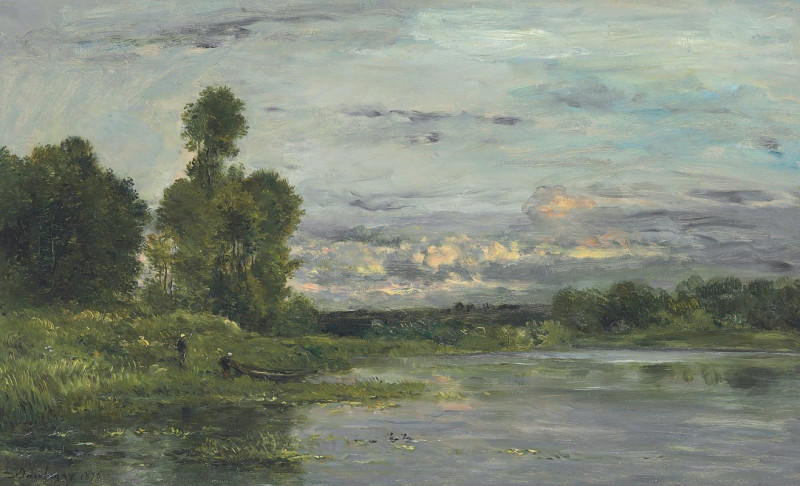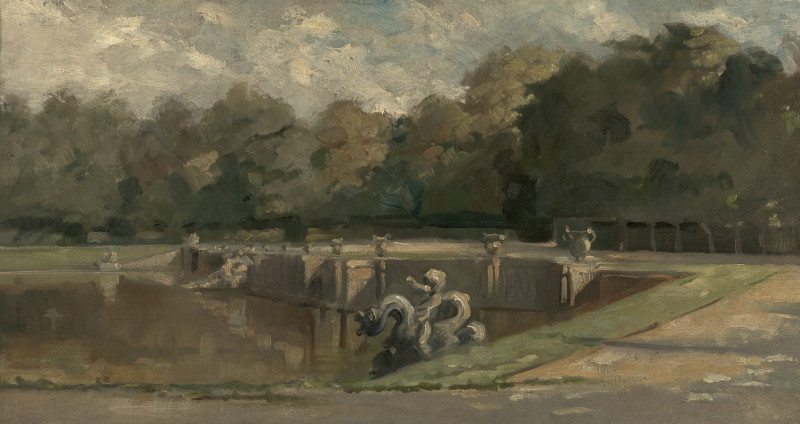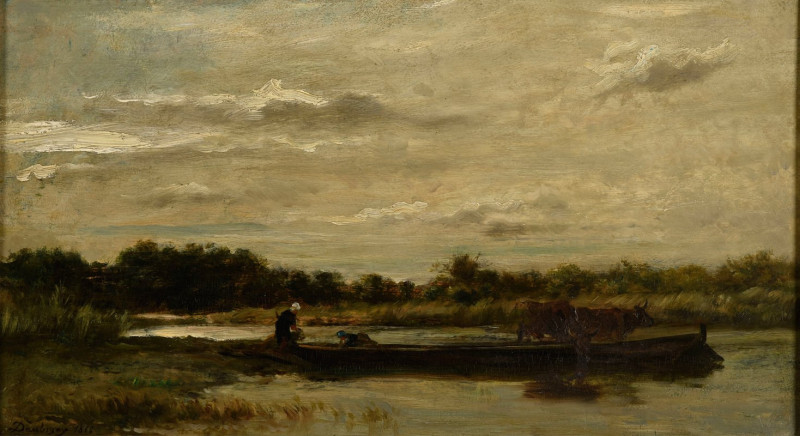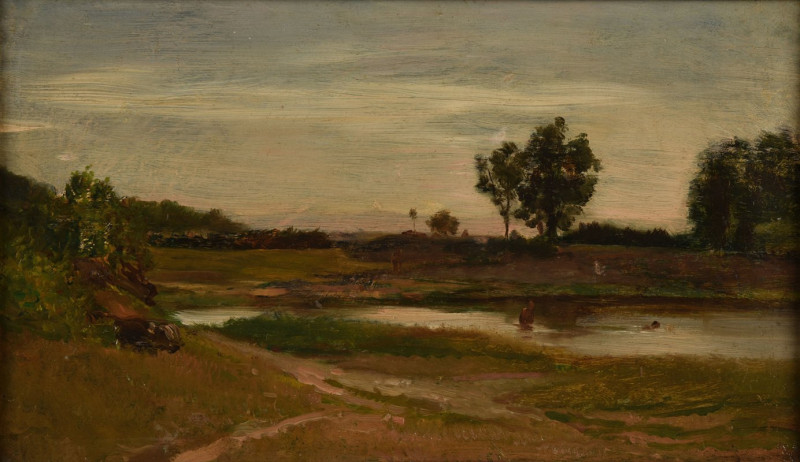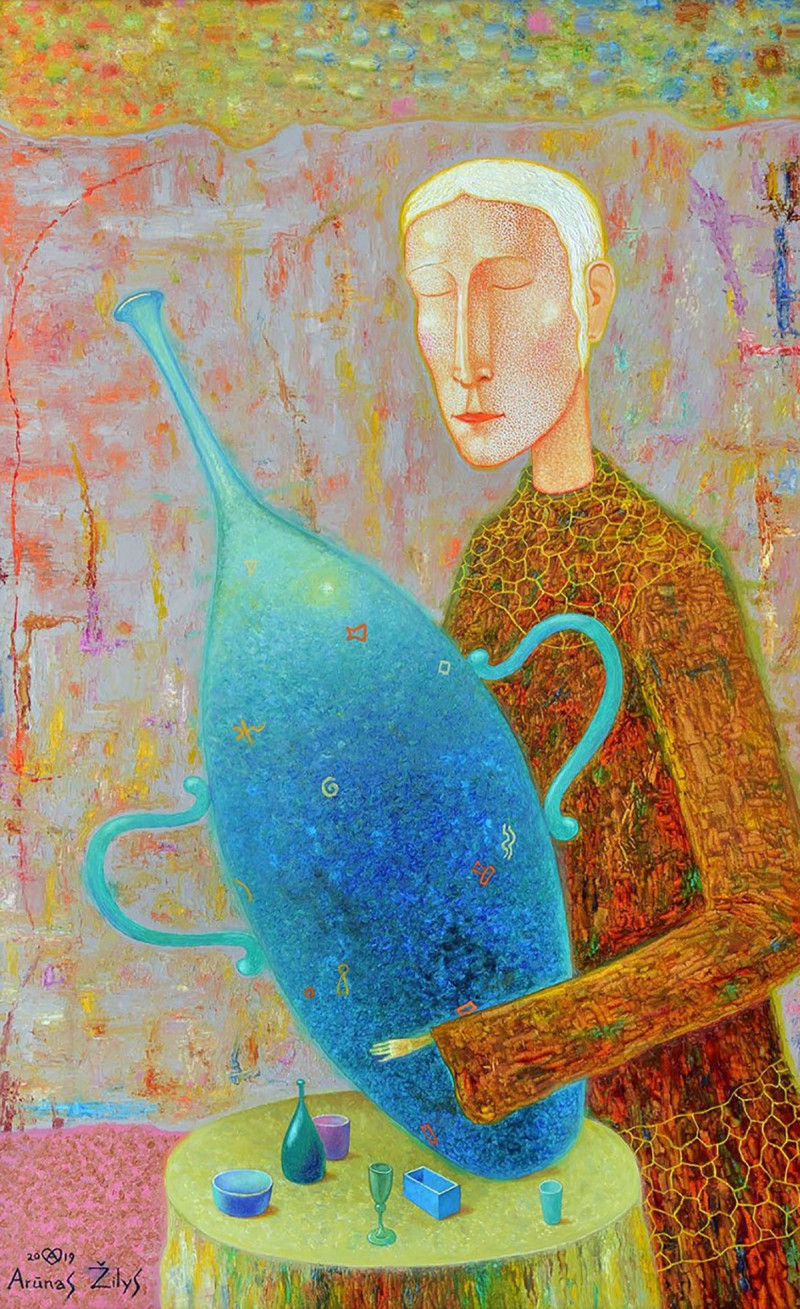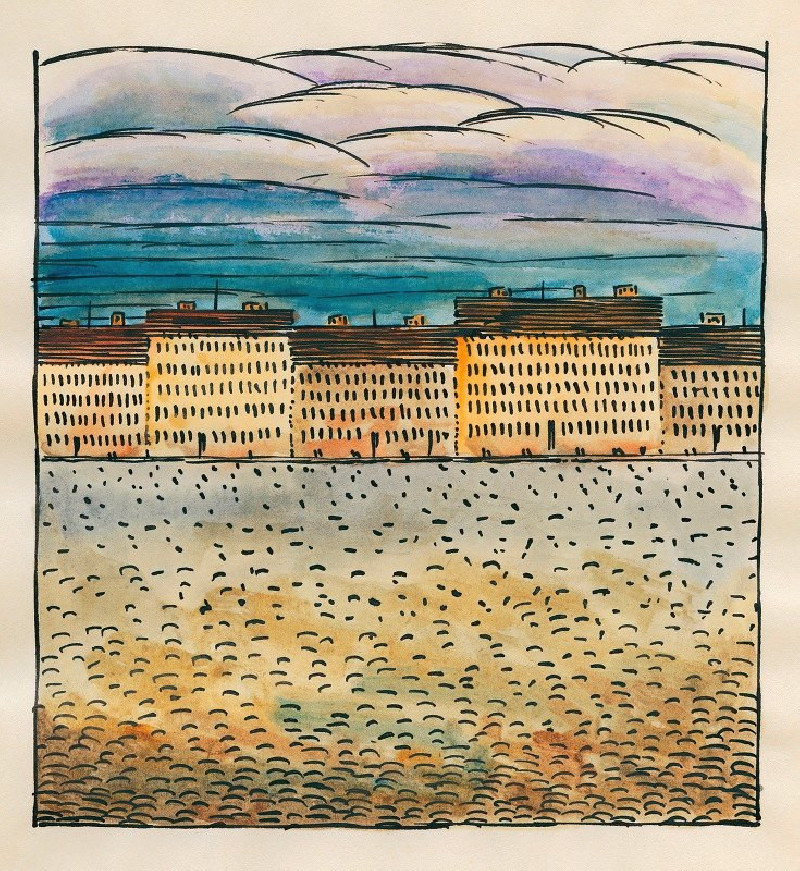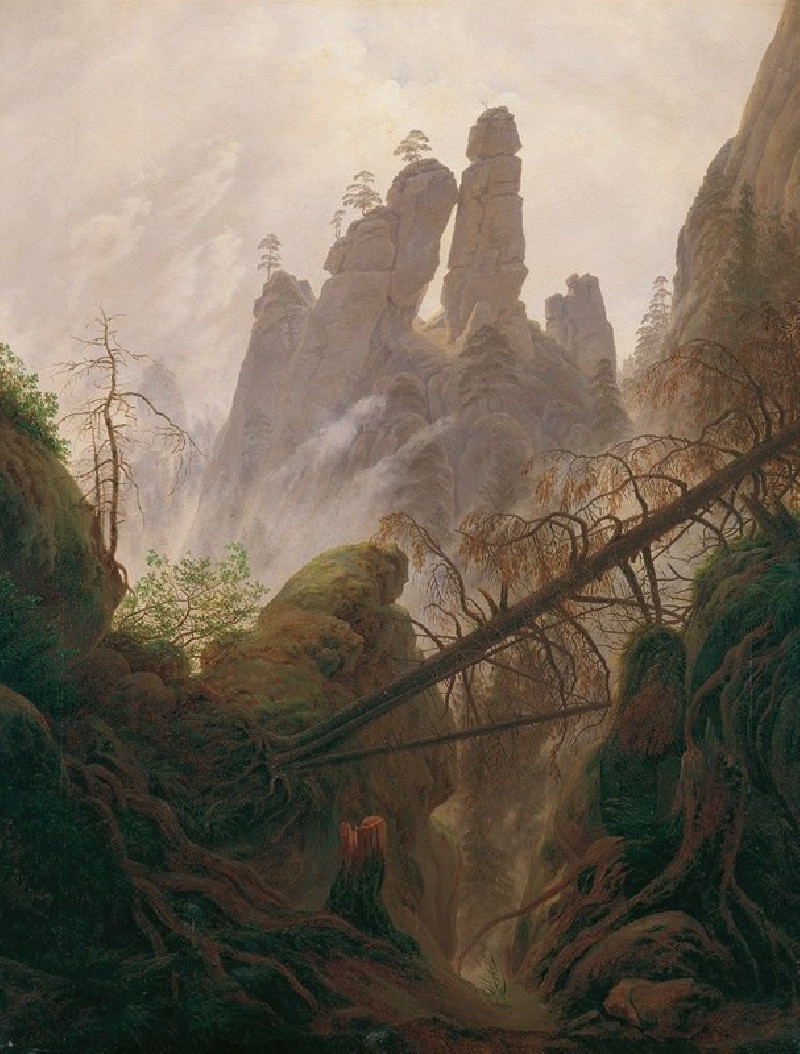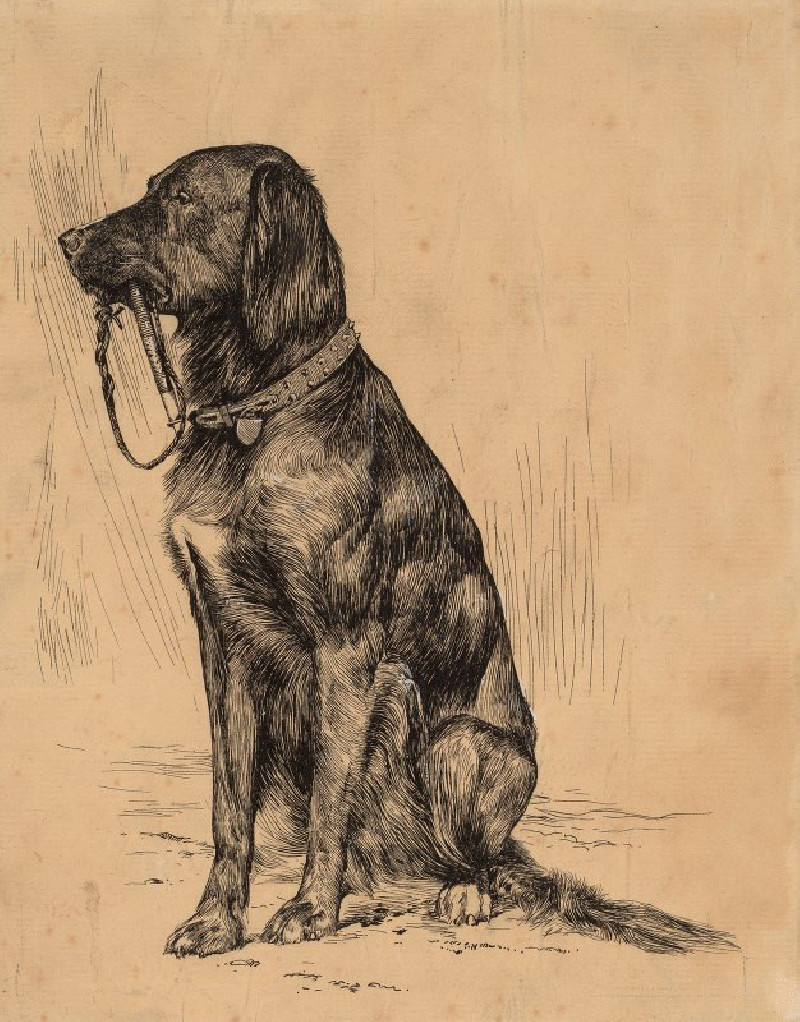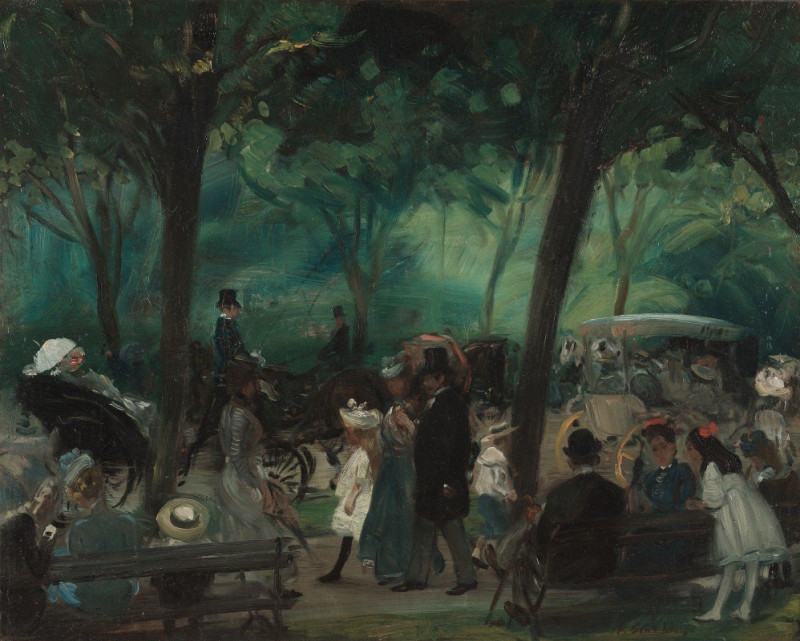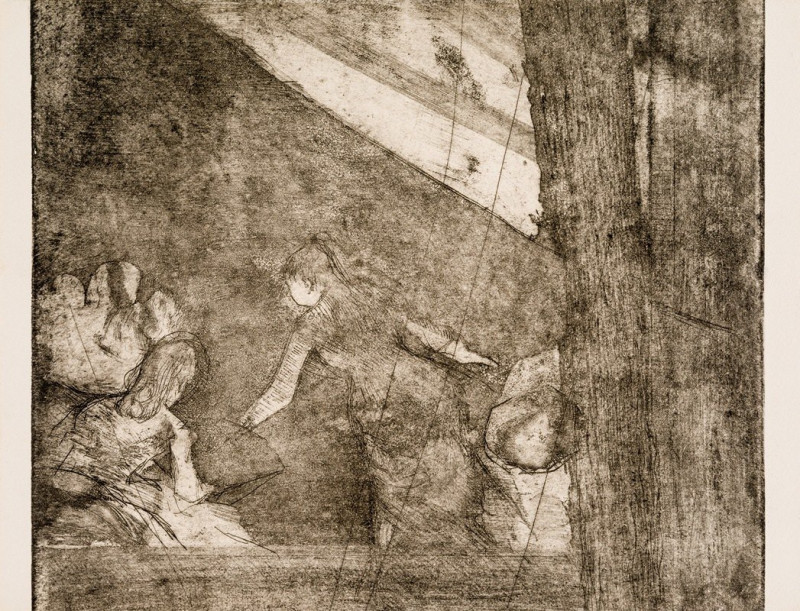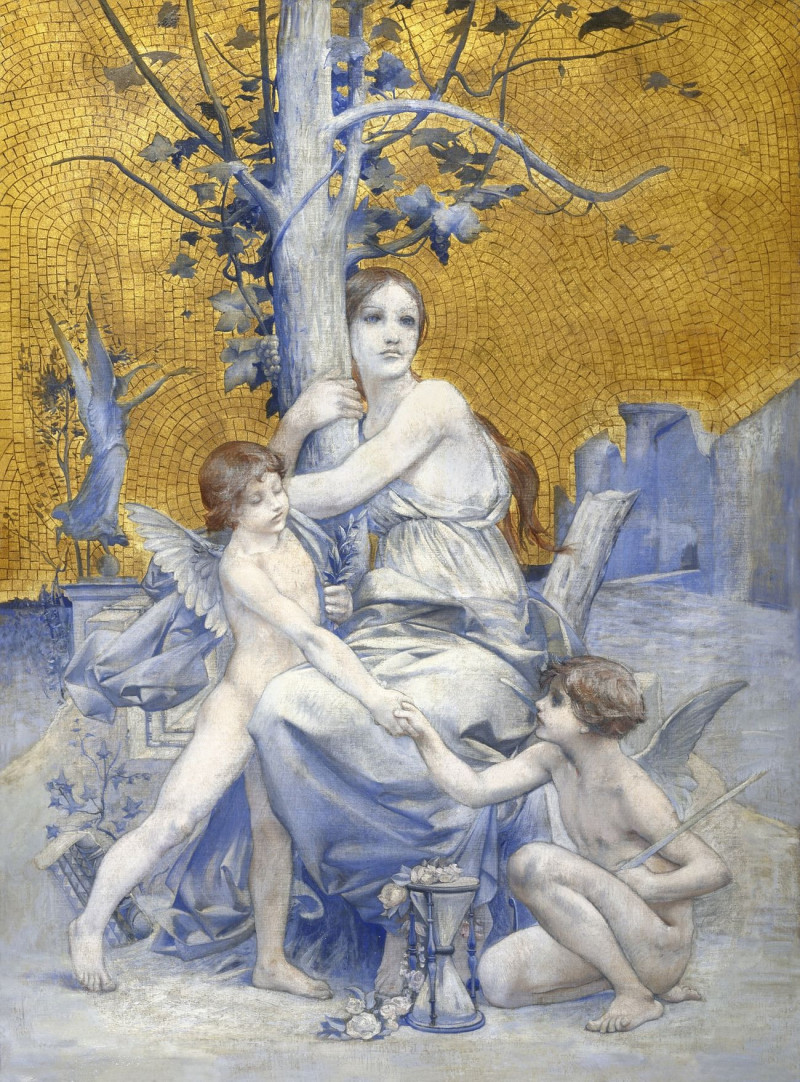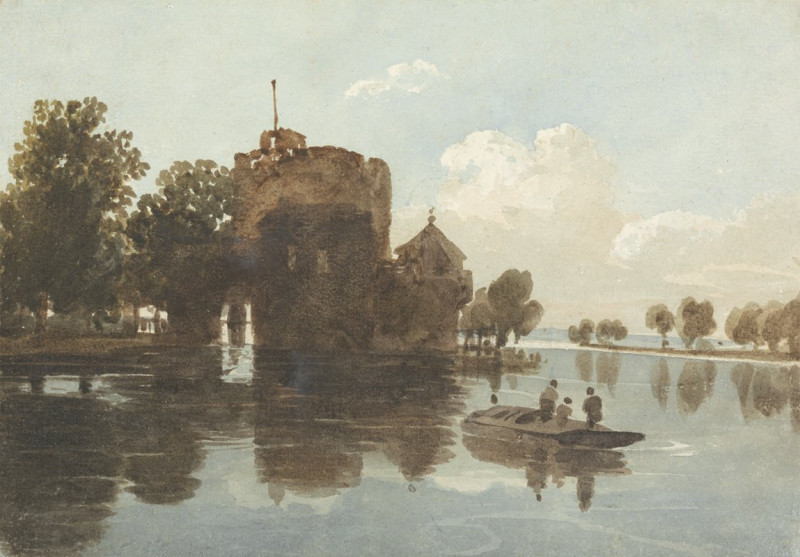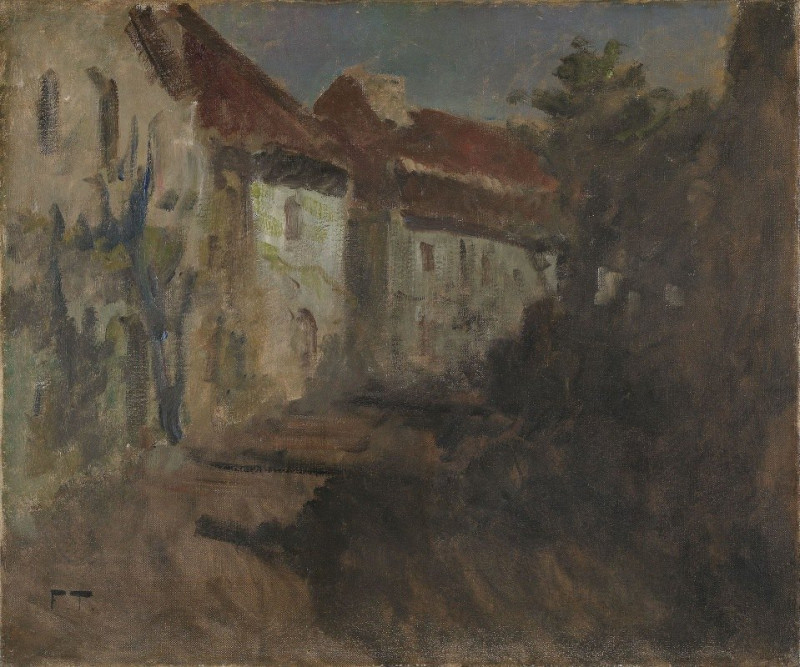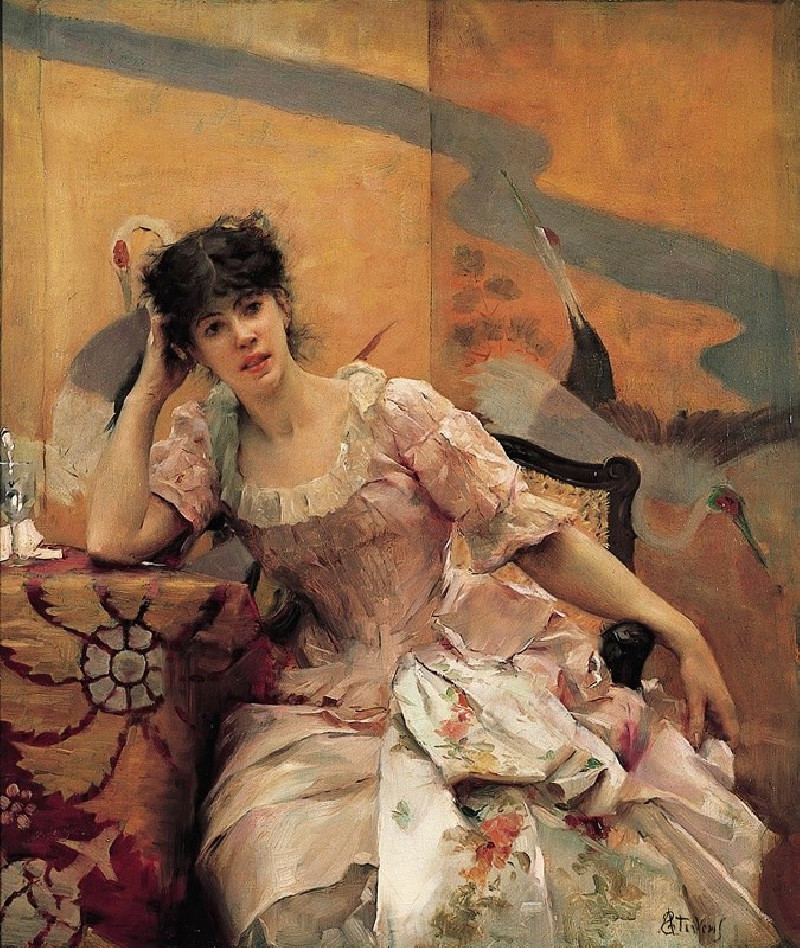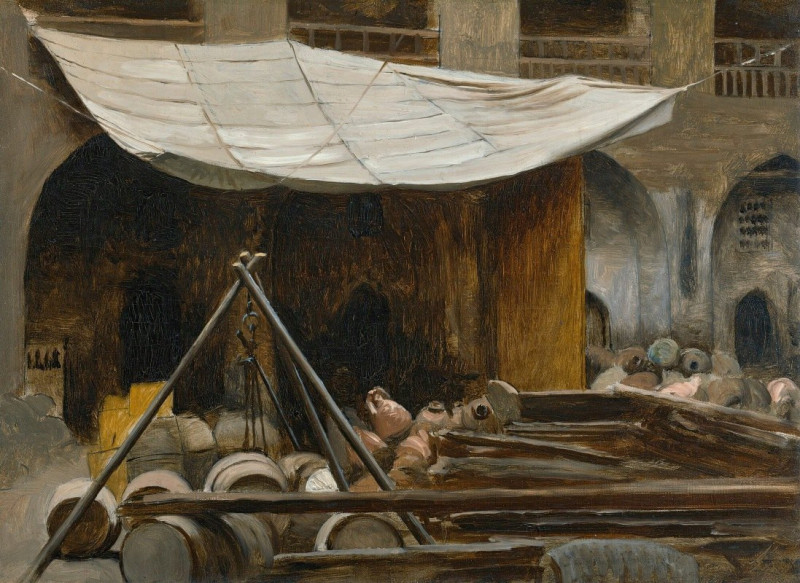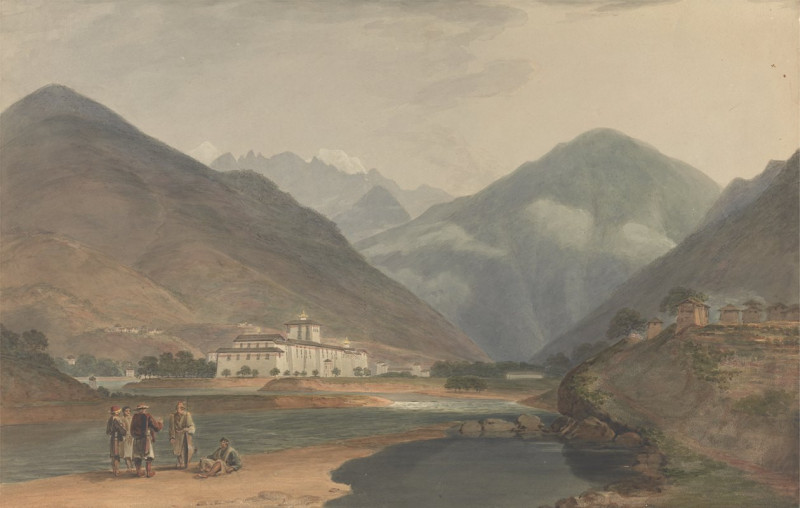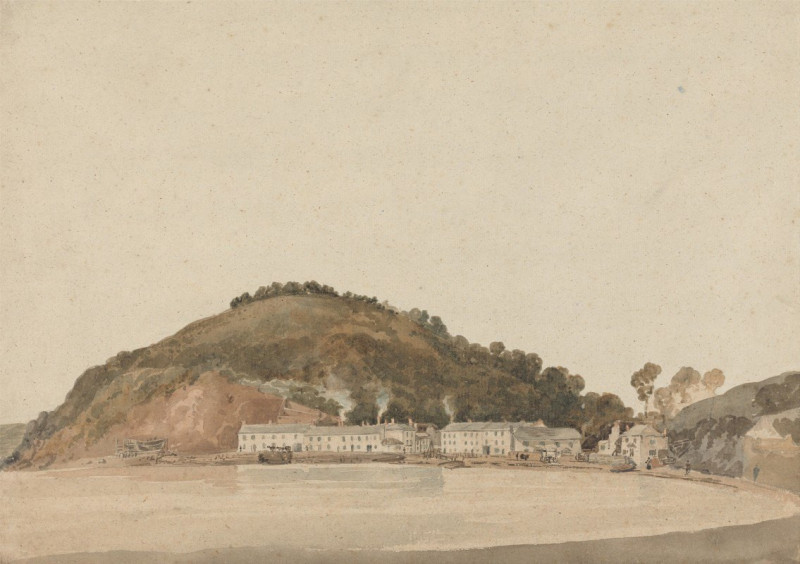On the Oise (1863)
Technique: Giclée quality print
Recommended by our customers
More about this artwork
"On the Oise" (1863) by Charles François Daubigny captures the serene beauty of the French countryside through the use of delicate brushwork and a harmonious palette of earthy tones. This exquisite landscape painting portrays a tranquil scene along the Oise River.The artwork is characterized by a vast, softly lit sky that dominates the upper half of the canvas, suggesting the quiet stillness of an early morning or late afternoon. Below, the river gently meanders through the composition, reflecting the light blue of the sky and flanked by lush greenery. A group of ducks paddles calmly near the riverbank, adding a lively touch to the tranquil scene. On the left, a small boat with a solitary figure suggests human presence without disturbing the peacefulness of nature. The distant horizon is marked by faint outlines of trees and structures, possibly alluding to a nearby village.Daubigny's skillful use of light and shadow, along with his soft, atmospheric perspective, invites the viewer to a moment of quiet reflection, typical of his works that aimed to convey the subtle beauty of nature.
Delivery
Returns
Charles-François Daubigny (15 February 1817 – 19 February 1878) was a French painter, one of the members of the Barbizon school, and is considered an important precursor of impressionism.
He was also a prolific printmaker, mostly in etching but also as one of the main artists to use the cliché verre technique.


